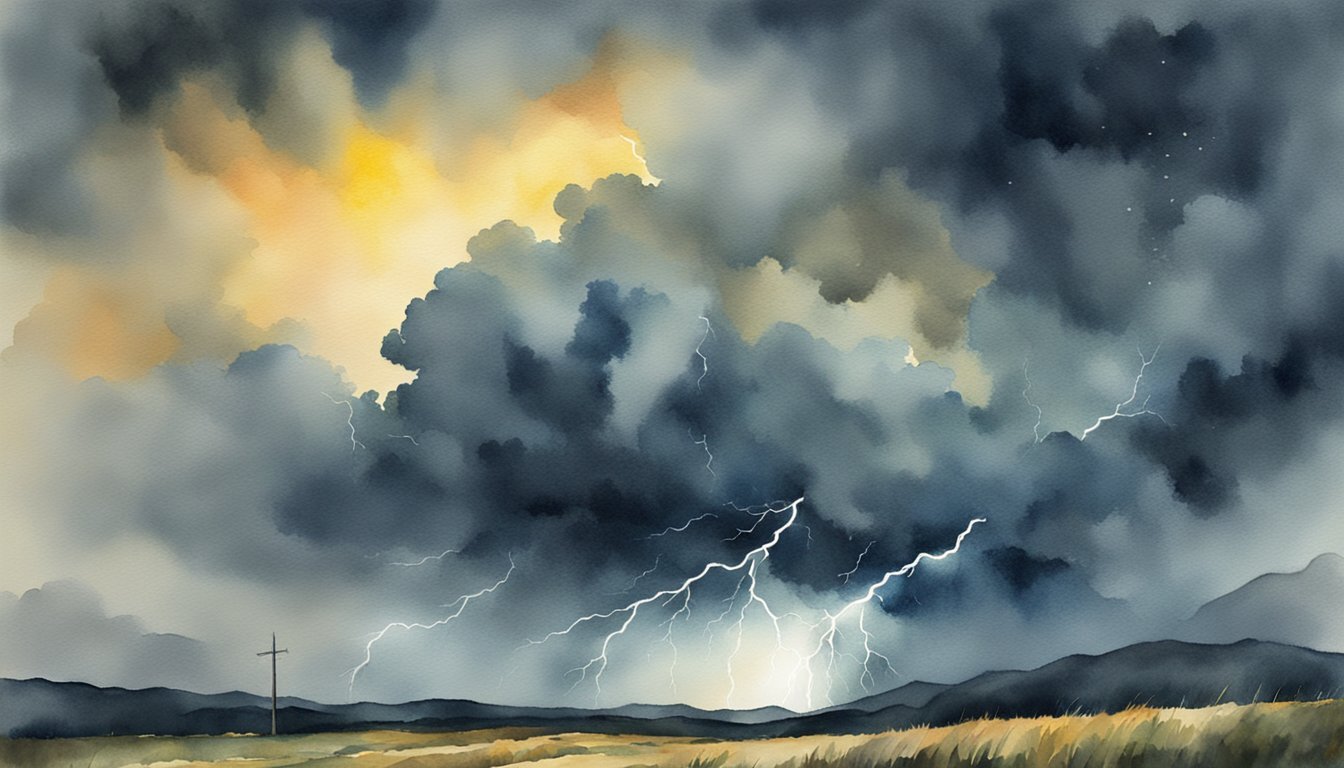Understanding Lightning
The Science of Lightning
Lightning is a fascinating natural phenomenon resulting from electrostatic discharges in the atmosphere. It occurs between electrically charged regions within thunderstorm clouds or between the cloud and the Earth’s surface. As the charges within the cloud separate and organize, the electric field between negative and positive charges intensifies. This leads to the formation of a highly electrically conductive plasma channel, that rapidly heats the surrounding air to roughly 25,000°C.
Types of Lightning
There are several types of lightning, such as cloud-to-ground, intra-cloud, and cloud-to-air. Cloud-to-ground lightning is the most dangerous, as it connects the negatively charged bottom of the thunderstorm cloud to the positively charged ground. Intra-cloud lightning occurs within the same cloud and is the most common type. Ball lightning and “bolt from the blue” are rare and fascinating lightning types that are still not completely understood by scientists.
Lightning Formation
The formation of lightning is a complex process involving the interaction of ions, ice crystals, and electrical charges within a thunderstorm cloud. Rain and ice particles collide, causing the separation of positive and negative charges within the cumulonimbus clouds. Negative charges typically accumulate at the bottom of the cloud while positive charges remain at the top.
This charge separation leads to the generation of a strong electric field between the cloud and the Earth’s surface. As the potential difference (measured in volts) increases, a streamer of negative charge, or a negative leader, begins to move towards the Earth. When this streamer connects with a positively charged leader from the surface, an electrical current, measured in amperes, flows through the conductive plasma channel, producing the brilliant and powerful flash of the lightning stroke. This channel also emits electromagnetic radiation, including visible light.
In summary, lightning is a captivating natural phenomenon that occurs due to the interaction of electrical charges in the atmosphere. Its various types and the complex processes involved in its formation make it both intriguing and dangerous. By understanding the science behind lightning, we can appreciate its beauty while taking necessary precautions to stay safe during thunderstorms.
Safety and Effects of Lightning

Lightning Safety Measures
Lightning, a natural occurrence during thunderstorms, is a potentially deadly force. It can cause fatalities, injuries, and property damage. To minimize the risks, it’s crucial to follow safety measures during a thunderstorm. One essential recommendation is to avoid contact with water, as lightning can travel through a building’s plumbing.
It’s also crucial to stay away from tall objects like trees or metal poles, as they can act as conductors for lightning. In America, lightning strikes frequently, with states like Florida experiencing a higher risk due to increased moisture and storm clouds. If caught outdoors during a storm, find shelter indoors or inside a hard-topped vehicle.
Impact of Lightning on Environment
Lightning doesn’t just pose a threat to humans; its effects can extend to the environment as well. One of the more well-known outcomes of lightning is the creation of forest fires, fueled by the heat generated from a lightning strike. These fires can be particularly destructive when combined with other factors like hurricanes, snowstorms, or volcanic eruptions.
Additionally, the thunder that is produced during a lightning event is a result of rapidly expanding gases heated by the intense energy of the lightning channel. The shock wave created by this expansion of heated air can be heard as the sound of thunder.
In rare cases, snowstorms can produce a phenomenon called thundersnow. This occurs when a lightning strike coexists with a snowstorm, leading to precipitation in the form of snow rather than rain. Thundersnows are less frequent due to the specific weather conditions required for their formation.
Lightning is a fascinating yet dangerous aspect of severe weather. By understanding the risks and following safety measures, we can better protect ourselves and appreciate the unique phenomena that accompany this powerful natural occurrence.

